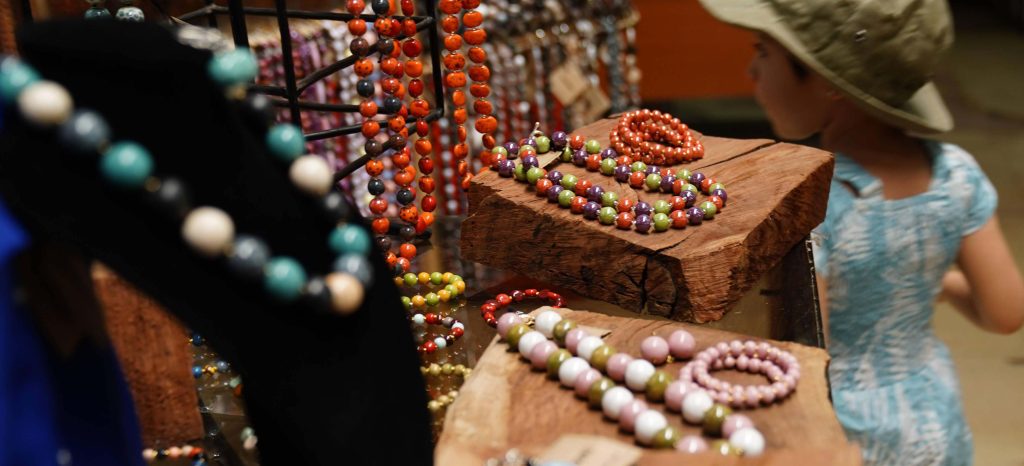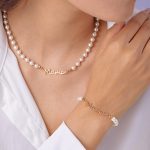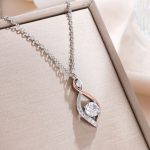Don't miss our exclusive offer! When your purchase totals $50 or more, you can automatically claim a coupon and enjoy a 15% discount!
2025 The Complete Guide to Making Handmade Necklaces and Bracelets: A Creative Journey from Materials to Finished Products
In the fascinating world of handmade jewelry, creating a necklace or bracelet by hand not only showcases unique personality but also is a creative adventure full of fun and a sense of achievement. This article will share in detail the experiences and techniques of making handmade necklaces and bracelets, from the know – how of material selection, the inspiration for design concepts, the exquisite

handmade jewelry
I. Material Selection: Laying the Foundation for Creativity
Beads: The Charm of Diverse Materials and Shapes
Beads are the core elements of handmade jewelry, with a wide variety of materials and shapes. Natural stone beads such as crystals and agates exude natural aura with their warm texture and unique patterns, making them the first choice for those who pursue a natural and rustic style. Glass beads, on the other hand, add a gorgeous luster to the work with their rich colors and excellent gloss. Plastic beads are lightweight and affordable, suitable for creators on a budget. In terms of shape, classic round beads are versatile and practical, while irregularly shaped beads such as teardrop – shaped and square ones can endow jewelry with unique personalities. For example, when creating ethnic – style jewelry, wooden or bone beads can perfectly create a simple and ancient charm.
Wires: Different Characteristics for Different Needs
The choice of braiding wires is crucial. Nylon wires are strong and wear – resistant, suitable for jewelry that needs to be worn for a long time; cotton ropes are soft and skin – friendly, with a retro atmosphere, adding a special flavor to the work; jade wires are smooth and highly flexible, ideal for fine braiding. When stringing beads, elastic wires are convenient for making stretchable bracelets, which are easy to wear; metal chains, when paired with delicate beads, can create stylish and gorgeous necklaces.
Accessories: The Finishing Touch
Accessories include clasps, pendants, metal pieces, etc. When choosing a clasp, pay attention to its ease of opening and closing and firmness, and its material and color should be in harmony with the overall style. Pendants are the key to enhancing the highlights of jewelry. They can be carefully selected according to the theme. For example, for a marine – themed jewelry, shell – shaped and starfish – shaped pendants can instantly create a marine atmosphere.
II. Design Concept: Inspiring Creativity
Determine the Style: Matching the Occasion and Preferences
Determine the style of jewelry according to the wearer’s preferences and the occasion of use. A simple and fresh style is suitable for daily wear, easy to match with various clothes; a gorgeous and exaggerated style is perfect for parties, making you the focus of attention. Draw inspiration from a wide range of fields such as nature, national culture, and art works. For example, taking autumn as the theme, use red, yellow, and brown beads to create a maple – leaf – themed necklace, integrating the beauty of the season into the jewelry design.
Color Matching: Applying Color Theory
Applying color theory can make the color matching of jewelry more attractive. Monochromatic color matching, such as the combination of dark blue and light blue beads, creates a harmonious and hierarchical visual effect; complementary color matching, such as red and green, blue and yellow, has a strong contrast, generating a powerful visual impact and showing a unique personality.
Arrangement and Combination: Creating Rich Variations
When making necklaces or bracelets, the arrangement and combination of beads should be skillfully varied. You can adopt methods such as size gradation and color alternation, or insert accessories of different materials at intervals to enhance the richness of the jewelry. For example, arrange large and small beads at intervals, or alternate beads and metal pieces, breaking the monotony and adding a sense of design.
III. Weaving Techniques: Carving Details with Ingenuity
Basic Knotting Methods: The Basic Language of Weaving
Mastering basic knotting methods such as flat knots, snake knots, chainmail knots, and Peruvian knots is the foundation of weaving. Flat knots are simple and flat, often used for the finishing of bracelets, making the ends neat and beautiful; snake knots are tight and elastic, suitable as the main structure of bracelets; chainmail knots are three – dimensional and textured, adding a unique charm to necklaces.
Weaving Points: Controlling Tension and Consistency
During the weaving process, the tension of the wire should be moderate. If it is too loose, the jewelry will deform and affect the overall effect; if it is too tight, the wire may break or the beads may be damaged. At the same time, ensure that the size and tightness of each knot are consistent, making the woven part uniform and neat, demonstrating exquisite craftsmanship.
Special Techniques: Enhancing the Hierarchy of the Work
When making multi – layer necklaces or bracelets, pay attention to controlling the length and spacing of each layer. You can use crimp beads or knots to fix the position, effectively preventing the layers from tangling. Try special techniques such as double weaving, which can make the work thicker and more three – dimensional, showing unique creativity.
IV. Finishing Touches: The Perfect Finale
Knotting and Fixing: Ensuring Firmness and Durability
When finishing, use a double – knotting method to ensure that the knot is firm. To prevent it from loosening, you can drop a small amount of glue or nail polish on the knot. If using elastic wire, after knotting, carefully hide the ends of the wire into the bead holes or inside the braided part to keep the appearance clean.
Trimming the Ends: Pursuing Exquisite Details
Carefully trim the excess wire ends with scissors, cutting them as short as possible to make the ends flat and smooth. For harder wires, you can carefully burn the ends of the wire with a lighter and quickly pinch them into a small ball to effectively prevent the wire ends from fraying and improve the delicacy of the work.
Inspection and Modification: Presenting a Perfect Work
After completing the jewelry making, conduct a comprehensive and detailed inspection. Check whether there are loose beads, un – tightened knots, or parts that scratch the hand. If there are any defects, repair them in time to ensure that the final work is flawless.
In the process of making handmade necklaces and bracelets, every link contains infinite creativity and possibilities. By carefully selecting materials, skillfully conceiving designs, skillfully using weaving techniques, and perfectly handling the finishing work, you will create stunning handmade jewelry. These jewelry pieces are not only a unique expression of personal style but also can attract more attention in search engines with their rich content and unique creativity, becoming shining works in the field of handmade jewelry.




